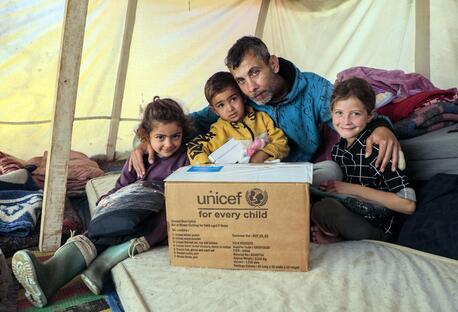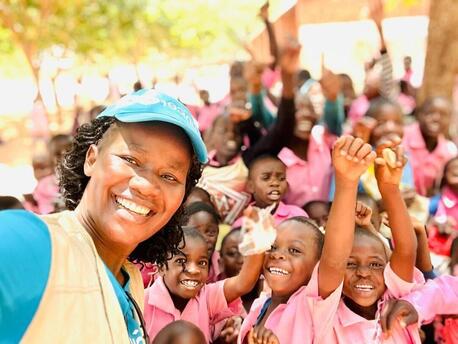
Demanding an End to Child Trafficking
By shifting our consumption habits and making changes to local legislation, we can curb the demand for child trafficking.
Child trafficking – the buying and selling of children for the purpose of exploitation – is one of the most profitable industries in the world. Annual revenues for child trafficking and forced labor total $39 billion dollars globally. To place that number in perspective, the trafficking of children generates more revenue than the NFL, NBA, NHL, and MLB combined. This is a shockingly high figure, and it begs the question – where does all of this money come from?
As a business, child trafficking operates on the same principles as the rest of the market – supply and demand. If the demand for something remains at a certain level (or increases), then there will be attempts to facilitate a corresponding supply. There is currently an incredibly high demand for exploited children – both for sex and labor. We play a large part in maintaining that demand, which means we also have the power to curb it.
Labor Exploitation:
Labor exploitation accounts for roughly 68% of the $39 billion industry, and we contribute to the demand for labor exploitation with our daily purchases. Cotton, for example, is present in our clothes, sheets, and towels and it is considered a worst-offender when it comes to child trafficking.
Cotton-based clothing production essentially consists of 5 steps: planting, harvesting, ginning, spinning, and trimming – and trafficking is present at every step along the way. In some places, it is harvested by children as young as 5 working 16-hour days.
Our increasingly globalized economy makes it difficult to trace many of our products to their source, but it also makes it all the more important to do so. When we demand cheap goods, companies look for ways to reduce retail prices, and have historically prioritized their profit margins over ethical sourcing. As such, they may source from farmers and manufacturers that engage in labor trafficking. This is not to say that our favorite brands intentionally engage in child trafficking, but there is little economic incentive for them to actively avoid it. That is where we come in. By shifting our consumption and calling on companies to exhibit a transparent, ethical supply chain, we can effectively create a demand for ethically sourced products. The more we shift our consumption, the less we contribute to that $39 billion global child trafficking trade.
Sexual Exploitation:
Sexual exploitation accounts for roughly 22% of the $39 billion industry. In order to meaningfully tackle this issue, we must take a comprehensive approach within the context of the larger commercial sex industry. Even if we do not engage in sexual exploitation directly, we remain complicit until we pressure our elected officials to punish those who create the demand. The market for trafficking children is responsive to the high demand, so it is important that our legislation aligns with that reality. However, legal statutes throughout the country tend to criminalize the person being sold for sex rather than the buyer. This has resulted in a majority of U.S. states criminalizing sex trafficking victims. In fact, Bureau of Justice statistics indicate that over 1,000 children in the U.S. are arrested for prostitution annually. Children cannot consent to sex, and therefore any engagement in commercial sex with a minor is sex trafficking – not prostitution. Prostitution charges have devastating effects on trafficking survivors in both the short and long term. They make them more vulnerable to trafficking by creating “significant barriers [for] individuals who seek to escape a trafficking situation [by] finding lawful employment, safe housing and education.”
It is important to note that sexual exploitation is a gendered issue that disproportionately affects girls. On a national level, women and girls account for nearly double the number of prostitution arrests relative to men and boys, even in areas where there are “a lot more Johns.” According to the Captain of the Springfield Police Department in Massachusetts, where women account for 70% of the arrests, the lopsided arrests are largely a result of a lack of resources. He also notes that, although it is more difficult to go after buyers logistically, if it were not “for the customers,” the issue would go a long way toward being resolved.
Reducing Our Impact
As long as the demand for cheap goods remains at the level it is, traffickers will prey upon vulnerable children to try and meet that demand to make a profit. It’s on us to expand the demand for ethically-sourced products, and to call on our elected officials to meaningfully attack the issue of sexual exploitation.
TAKE ACTION
- Where was your shirt made? Your pants? Check your label, and do some research on where your clothing comes from. Take this a step further by setting a New Year’s resolution to only buy secondhand or ethically-sourced clothing.
- Research your local and state anti-trafficking laws. Can children be arrested for prostitution? Are there safe houses available for trafficking survivors?
- Challenge yourself to buy ethically sourced food. A Fair Trade certification verifies that the supply chain is exploitation-free. Start by purchasing one item (chocolate, coffee, tea) and working up from there.
- Get your friends involved by hosting a Fair Trade Dinner Party.
- Ask to have the National Human Trafficking Hotline posted in shops, restaurants, and schools in your area.
- Learn more about child trafficking and how to spot the signs.
- Participate in Freedom Day on February 1st by raising awareness about child trafficking on social media and tell your representatives to support the Stop Enabling Sex Traffickers Act (SESTA). Be sure to use our hashtags #10MillionTooMany and #ExpressNotExploit and tag us @EndTraffick in your posts!
HOW TO HELP
There are many ways to make a difference
War, famine, poverty, natural disasters — threats to the world's children keep coming. But UNICEF won't stop working to keep children healthy and safe.
UNICEF works in over 190 countries and territories — more places than any other children's organization. UNICEF has the world's largest humanitarian warehouse and, when disaster strikes, can get supplies almost anywhere within 72 hours. Constantly innovating, always advocating for a better world for children, UNICEF works to ensure that every child can grow up healthy, educated, protected and respected.
Would you like to help give all children the opportunity to reach their full potential? There are many ways to get involved.





